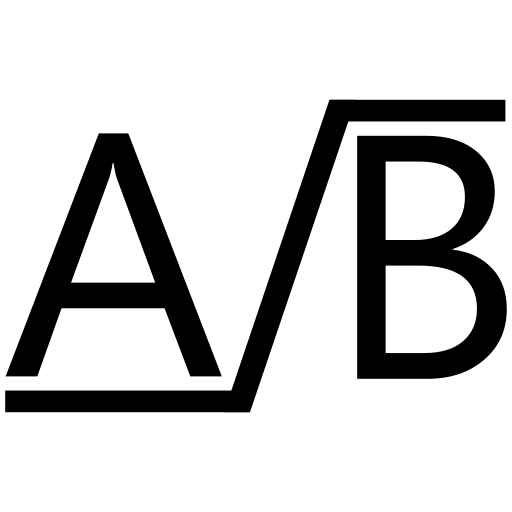Case Study 1 demonstrates my ability to lead high-impact research and collaborate with cross-functional teams to advocate for underserved populations, and to establish and maintain an Advisory Board for accountability and future growth.
Case Study 2 demonstrates my ability to synthesize findings to produce user-centered solutions that promote accessibility practices that benefit both customers and employees, and to expedite deliverables under tight timelines.
Case Study 3 demonstrates my ability to investigate complex problems to gain a better understanding of customer base and marketing strategies, to evangelize the importance of equitable gender representation in product and user experience, and to generate and lead a Research Community of Practice.
5-year project
Liaison program to help customers from diverse backgrounds and circumstances improve transfer rates
Project Problem and Research Questions
The merger of two institutions initially led to customers meeting friction in the transfer process. Customers from underserved and low-income backgrounds experienced the most difficult challenges, leading to comparatively lower transfer rates. Both institutions wanted help improving transfer rates for this population.
Research questions: What specific barriers cause transfer friction for this population? How might we create a smoother user process that results in higher transfer rates?
Role
As the Liaison Program Lead, I led the program’s qualitative and quantitative research efforts. My research goal for this brand new liaison program was to increase transfer rates for customers and improve communication between employees at both institutions.
I conducted in-depth interviews with both current and prospective customers to identify what obstacles caused friction in the transfer process.
I surveyed employees across multiple departments at both institutions to gather data.
I synthesized this data into a research report for stakeholders to collaborate on the project roadmap to increase customer transfer.
Outcome and Impact
These ongoing research efforts led to the development of new cross-institution programs and events, which increased visibility of the smaller institution and facilitated streamlined customer communication.
These programs helped customers from diverse backgrounds and circumstances improve transfer rates by 25% in the first five years.
This research also led to the creation of an Advisory Board with stakeholders across multiple departments at both institutions to shape and inform future projects.
I was appointed Program Manager and this is one of the ongoing projects I manage.
4-month project
New employee orientation training materials and accessibility guide
Project Problem and Research Questions
An institution with a high turnover rate needed help expediting onboarding and accessibility efforts. In particular, new employees lacked central guidance on accessibility best practices to help customers from diverse backgrounds.
Research questions: What resources do new employees need to most efficiently create desired products? How might we create a concise training and centralized guide to bring new employees up to speed quickly enough to accommodate their customers by term start date?
Role
As the Design Researcher, I was responsible for the project’s qualitative research efforts. I conducted in-depth interviews with the previous year’s new hires to determine what they found helpful from orientation and what they found lacking at the term start date.
I researched and synthesized new employee orientation resources with an emphasis on accessibility across the institution’s multiple campuses.
I surveyed Subject Matter Specialists for further input and incorporated their insights into a proposal, which I used to initiate collaboration with other stakeholders.
Outcome and Impact
I identified the accessibility resources new employees need to effectively perform their duties by the term start date, with which I was able to design the curriculum in a strong new employee orientation.
I created resources and lessons including Learning Management System best practices and strategies for delivering accessible online content, and utilizing LMS analytics to identify pain points and respond to user engagement problems.
This new employee orientation with accessible materials expedited the onboarding process by 10%, and better prepared employees to incorporate accessible practices in their products.
The research insights from this project generated 3 additional quarterly professional development projects.
5-month project
Perceptions of women and gender expectations in media
Project Problem and Research Questions
An institution wanted better insight into perceptions of women and gender roles in media to improve user experience in their current offerings as well as identify future opportunities. The institution noticed a trend in declining enrollment for women-centered courses and needed to understand the root cause of the problem.
Research questions: How does the target demographic perceive women and gender roles in a variety of media? What can we learn about customers and their needs? How might we create a more inclusive experience to encourage customers to engage with subsequent products?
Role
I was the Lead Researcher and Curriculum Designer on this product, an original upper-level English course I created entitled Women Warrior Memoirs.
I conducted surveys at the start, midpoint, and conclusion of the term to gather data from customers about their perceptions of women and gender roles in the variety of media on which I built the curriculum.
I synthesized this data to report back to customers and then conducted additional in-depth interviews about their experience with these topics before and after engaging with the product to discern their likelihood of engaging with subsequent products.
Outcome and Impact
I shared this data analysis with institutional stakeholders, which led to a more nuanced understanding of our customer base and how to better market the product.
Marketing efforts based on this research increased enrollment 12% in the same academic year and resulted in stickier engagement in subsequent quarters.
I evangelized the need for diverse course offerings and content centering the lived experience of women. I presented this research at the national flagship conference, at which I gained additional insight and generated a Research Community of Practice with peers that extended across disciplines.
This project sharpened my sensitivity to nuances in storytelling by and about women, which makes me a more effective Inclusive Research Specialist.

